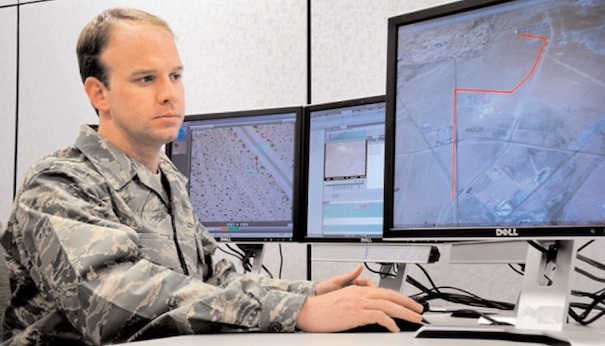Harris updates FAME, Your video management engine for corporate environments
Harris just introduced the version 3.1 of your Full-Motion Video Asset Management Engine solution (FAME) Intended for video tracking in government environments and intelligence centers. Among the improvements of this version are new virtualization tools, a VEP processor (Video Exploitation Processor) and a geospatial multiscreen.
 Harris just introduced the version 3.1 of your Full-Motion Video Asset Management Engine solution (FAME) Intended for video tracking in government environments and intelligence centers. Among the improvements of this version are new virtualization tools, a VEP processor (Video Exploitation Processor) and a geospatial multiscreen. The architecture of FAME 3.1 will allow organizations and governments to increase the speed of work with metadata as well as access from any PC to browser-based client that allows access to all the processing power of the FAME server. The FAME 3.1 allows you to ingest H.264 or MPEG-2 video in both standard definition and HD formats, collecting the metadata of the flow to store them in the base of the system in order to accelerate the search and cataloguing. All collected material is compiled under the Motion Imagery Standards Board (MISB) including critical geospatial and technical information that allows you to quickly locate relevant clips. The consultation of the material can be carried out from any point of the organization, obtaining the results regardless of where the images were ingested at first. On the other hand, thanks to the LDAP protocol (Lightweight Directory Access Protocol), Users can apply filters to find specific people or groups. Administrators can also apply filters to allow certain users access to multiple video streams, as well as the data created for these. The FAME 3.1 Expand the concept of bookmarks, that provide an integration point for external systems that produce metadata with temporal or geospatial references. Like this, An analyst can add the markers in real time, while the system that is generating other intelligence data can use the FAME marker interface to simultaneously annotate the images. last, Note that the virtualization incorporated into the new version allows you to share the resources of a physical computer in multiple environments, which greatly simplifies system administration. FAME thus enables failover and advanced redundancy techniques, Reducing the hardware footprint, reducing the complexity of scaling FAME systems to hundreds of users or video streams. In addition to increasing network efficiency by restricting most traffic to a single physical server.
Harris just introduced the version 3.1 of your Full-Motion Video Asset Management Engine solution (FAME) Intended for video tracking in government environments and intelligence centers. Among the improvements of this version are new virtualization tools, a VEP processor (Video Exploitation Processor) and a geospatial multiscreen. The architecture of FAME 3.1 will allow organizations and governments to increase the speed of work with metadata as well as access from any PC to browser-based client that allows access to all the processing power of the FAME server. The FAME 3.1 allows you to ingest H.264 or MPEG-2 video in both standard definition and HD formats, collecting the metadata of the flow to store them in the base of the system in order to accelerate the search and cataloguing. All collected material is compiled under the Motion Imagery Standards Board (MISB) including critical geospatial and technical information that allows you to quickly locate relevant clips. The consultation of the material can be carried out from any point of the organization, obtaining the results regardless of where the images were ingested at first. On the other hand, thanks to the LDAP protocol (Lightweight Directory Access Protocol), Users can apply filters to find specific people or groups. Administrators can also apply filters to allow certain users access to multiple video streams, as well as the data created for these. The FAME 3.1 Expand the concept of bookmarks, that provide an integration point for external systems that produce metadata with temporal or geospatial references. Like this, An analyst can add the markers in real time, while the system that is generating other intelligence data can use the FAME marker interface to simultaneously annotate the images. last, Note that the virtualization incorporated into the new version allows you to share the resources of a physical computer in multiple environments, which greatly simplifies system administration. FAME thus enables failover and advanced redundancy techniques, Reducing the hardware footprint, reducing the complexity of scaling FAME systems to hundreds of users or video streams. In addition to increasing network efficiency by restricting most traffic to a single physical server.
You liked this article?
Subscribe to our RSS feed And you won't miss anything.



